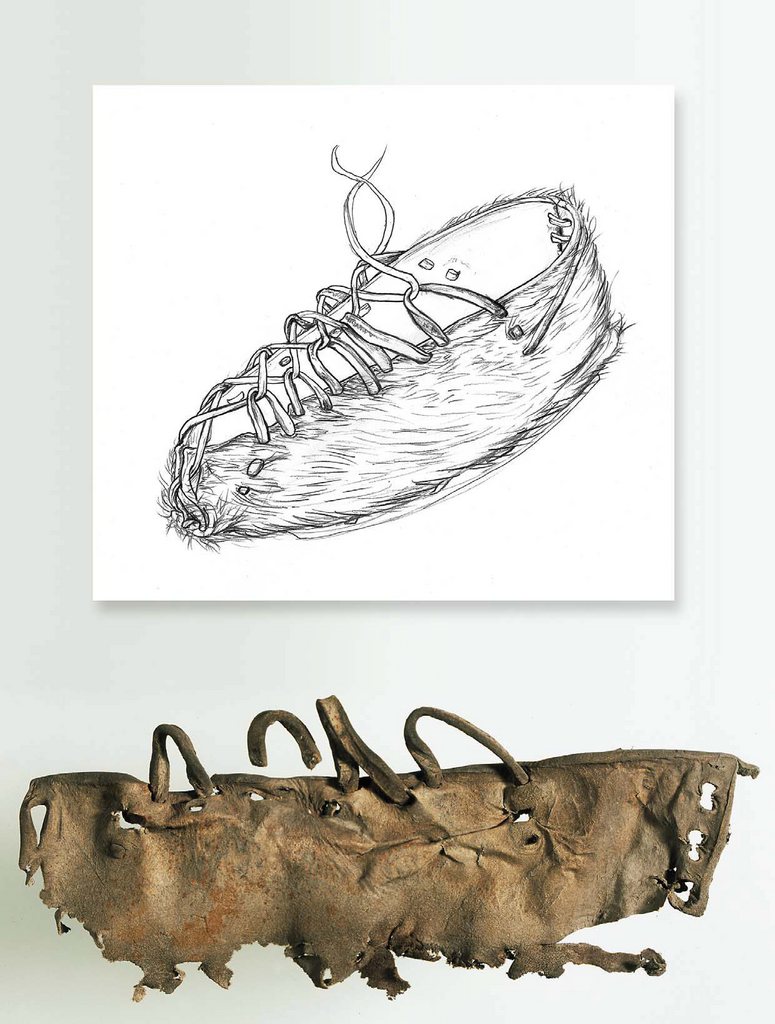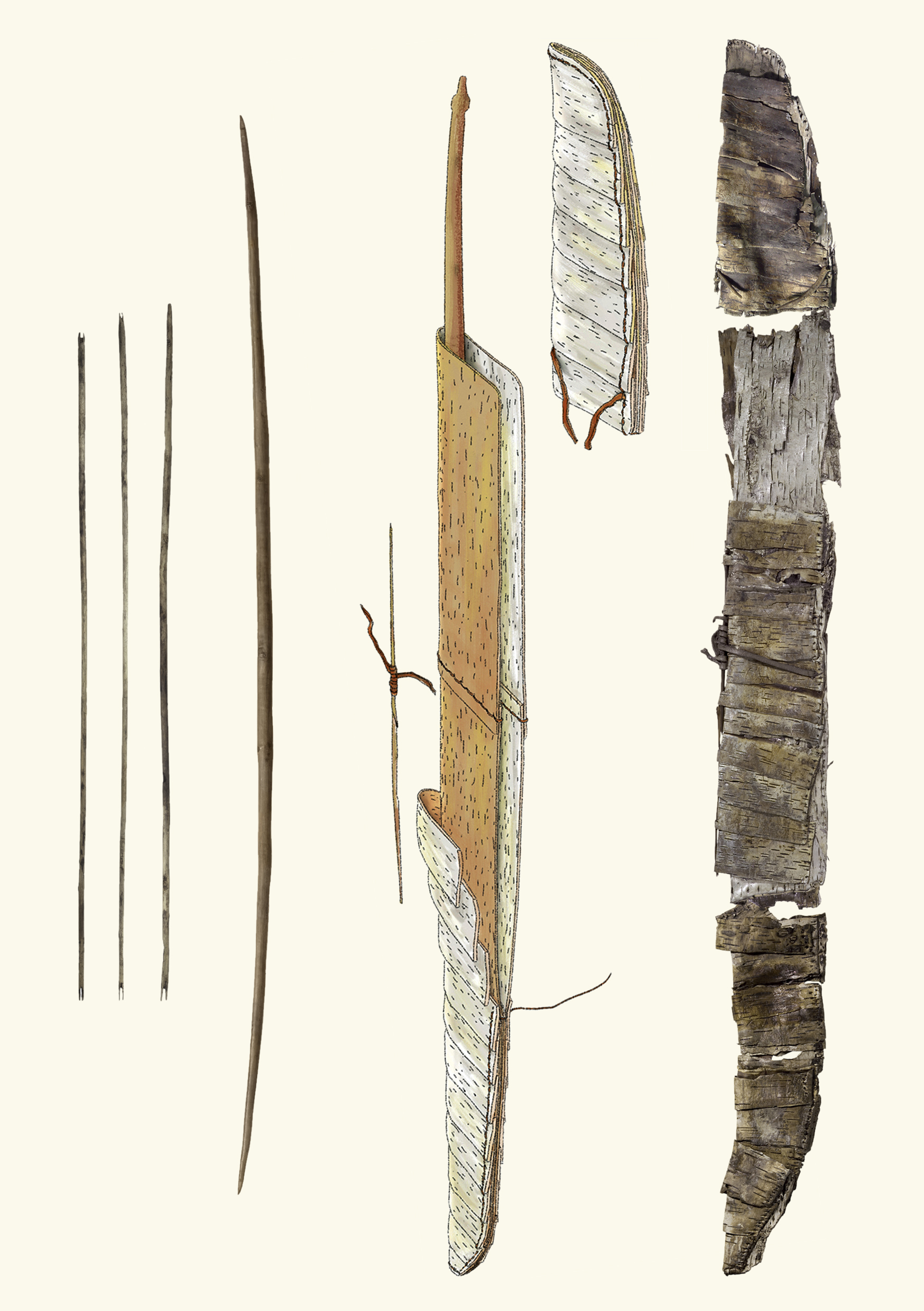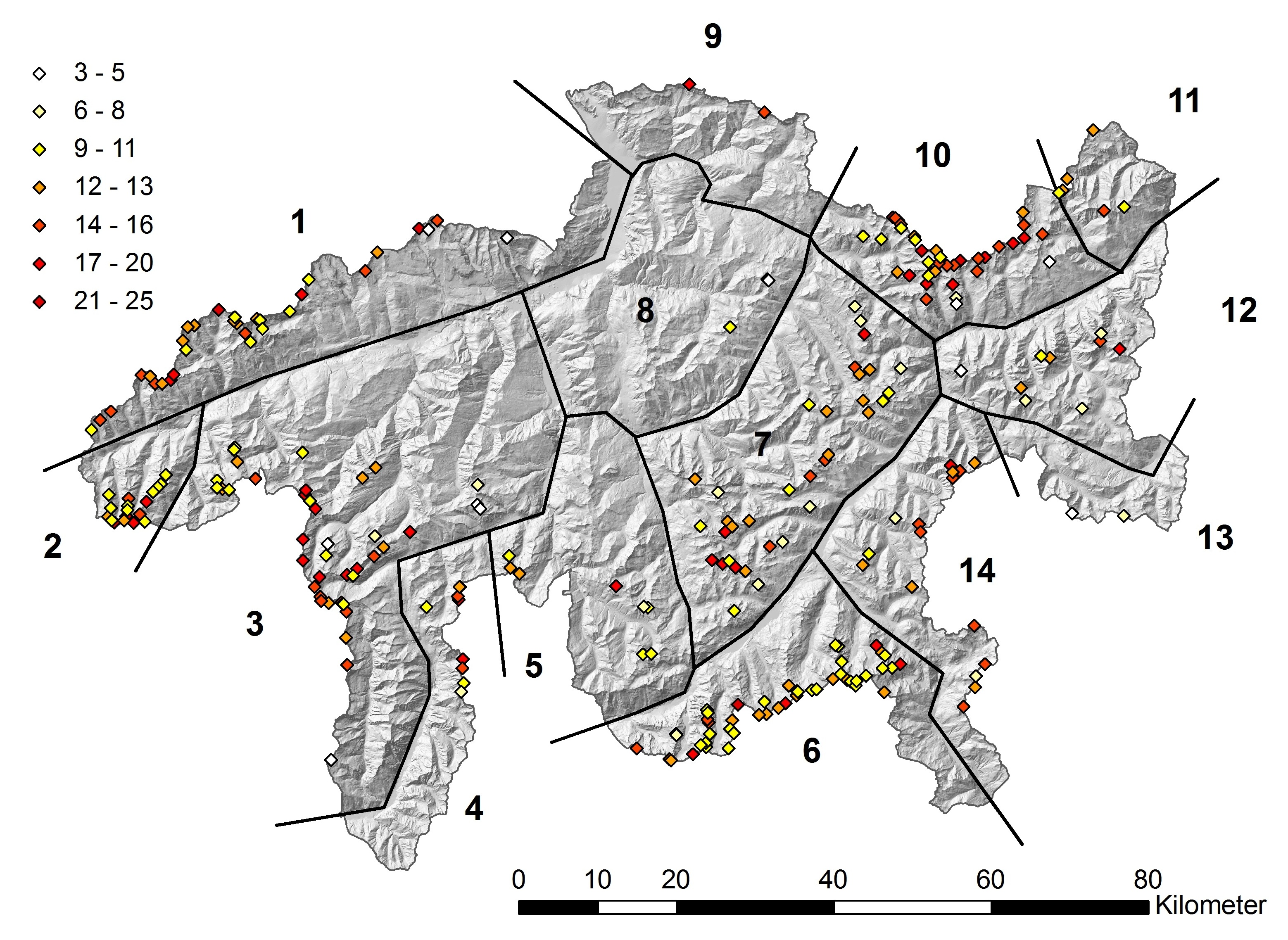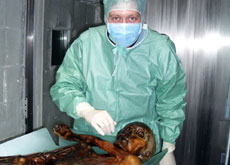Help wanted in search for more prehistoric icemen

If you find a set of keys or wallet, you’re likely to be a good citizen and hand them in to a lost and found bureau. But what do you do if you stumble upon a 5,000-year-old leather handbag while on a walking holiday in the Swiss Alps?
Leandra Naef has the answer. The fresh-faced archaeologist is the brains behind a new project called kAltes Eis (cOld ice). Her plan is to search for perfectly preserved artefacts trapped beneath ice patches in canton Graubünden’s mountains.
When patches of ice melt in the heat of summer, they can reveal old bottles, tin cans and other things thrown away or lost over the years – or even millennia – such as ancient pieces of wood and clothing.

Cue alpinists. Since archaeologists can’t always be in the right place at the right time, especially when dealing with melting ice, kAltes Eis is asking climbers and hikers to keep their eyes open for ancient discoveries.
The hunt is becoming increasingly urgent as more glaciers recede as a result of climate change. If these objects are not found shortly after they emerge from the melting ice, they could be lost or ruined, especially in the case of organic materials such as wood and clothing.
“For us archaeologists, it’s of course an absolute El Dorado,” explains Naef, who says ice can even preserve organic objects.
Naef started the kAltes Eis project in October 2013 after graduating with a Master’s Degree in Prehistoric Archaeology from the University of Zurich, where glacier archaeology first piqued her interest.
The project, which is operated by the Institut für Kulturforschung Graubünden (institute of research on Graubünden culture), will run until December 2015. The goal is to identify the most interesting ice patches in the canton so that its archaeological service can then monitor these sites.
Found! What should I do?
Artefact – freed from snow and ice
Document it carefully without touching or moving it (take a picture showing its relative size using a hiking stick, camera lens cap, etc, GPS position, sketch). It should only be removed if there is a risk of damage (impending snowfall, rockslide, danger of being trampled) or if it’s in a place difficult for researchers to reach. If taken away, the object should be kept in a fridge or freezer until such time that it can be handed over to experts.
Artefact – frozen in ice, or only partly exposed
Document the object but don’t touch it or try to remove it, and alert either Leandra Naef or the archaeological service of canton Graubünden as soon as possible.
Old finds
While nearly a quarter of a century has passed since German hikers found the 5,000-year-old corpse of Ötzi emerging from melting ice in South Tyrol, there is still much territory to explore in the Alps, according to Naef.
Some of the biggest discoveries in the Alps in recent years included an arrow quiver made from birch bark and leather leggings from around 3,000 BC, which were found by a couple of hikers at the melting Schnidejoch glacier in canton Bern.
Intriguingly, objects uncovered in ice patches differ depending on where they were found. In the Alps, for example, artefacts can be related to traders travelling over passes.
In North America and Norway, objects found in ice patches are usually connected to hunting, while in South America they are tied to “sacred activities.” These artefacts fill in gaps in knowledge, such as how early and to what extent people ventured into the Alps. It turns out Ötzi, for example, is related to Sardinians.
The Schnidejoch artefacts together with Ötzi’s clothing are two of the three oldest leather finds from Europe, but the best preserved thanks to the ice, and therefore with much of their DNA code intact.

DNA analysis has revealed that the 5,000-year-old Schnidejoch leggings were not only made of goatskin, but also from a breed previously believed only to be common to east Asia.
Time to act
“If we want to do something, it has to happen now, or else it will be too late, if it’s not already too late,” said Naef, who hopes to uncover some artefacts this summer.
“It was quickly clear to me that this was a good area with many promising finds and no wiggle room in terms of time,“ she told swissinfo.ch.
Indeed, time is not on the side of the archaeologists or the artefacts they are hoping to uncover. Glaciers around the world are ebbing, and Switzerland’s are no exception.
“In the last 30 to 40 years, the warm temperatures in the summer and winter are largely connected to anthropogenic climate change,” Martin Grosjean, executive director of the Oeschger Centre for Climate Change Research at the University of Bern, told swissinfo.ch.
“It’s no coincidence that there have been extremely warm summers in the last 10 to 20 years, and this has led in consequence to the glaciers and ice patches melting extremely quickly.”
“There is a window of opportunity of several years or perhaps one or two decades,” said Grosjean, whose research interests include geoarchaeology at the Schnidejoch site. “In 50 years, all these glaciers will be gone. We know that today.”
Points of interest
Naef’s kAltes Eis project focuses on ice patches, which are more stable than glaciers so there is a greater chance of finding perfectly preserved objects.
Using a modified GIS-based (Geographic Information Systems) forecasting model first developed by archaeologists in Alaska, she has been able to pinpoint possible archaeological sites in the mountains.

She has slowly narrowed down the number of possible sites to around 300, focusing on small alpine passes in the canton that are at least 2,500 metres above sea level. She further analysed those 300 spots, awarding them points. For example, a pass that connects two secluded valleys was likely used for travel, making finds more likely. In contrast, a small path located next to a large passage was probably not used as frequently.
In total, Naef identified 40 points that she believes are most likely to yield artefacts, and she will largely examine those herself over the next two summers.
For the remaining 260 points of interest, she will rely on hikers roaming the mountains between July and September to inform her if anything interesting turns up.
One of the main points of contact for hikers will be the wardens of the Swiss Alpine Club’s huts. Reto Barblan, who operates the Kesch hut in Graubünden, says he is happy to do his part.
“If you can tell people that it’s important and interesting, then perhaps they will make the effort to notify the archaeologists if they find something,” Barblan said.
As for whether some hikers could choose to play the villain and run off with the treasures, Naef isn’t concerned. She says the uncovered artefacts will likely be wood or other organic items rather than gold coins.
“We are looking for objects that are very valuable for science but their value for private citizens is difficult to determine,” Naef explained. “Therefore we don’t have to fear looting or grave robbers.”

In compliance with the JTI standards
More: SWI swissinfo.ch certified by the Journalism Trust Initiative











You can find an overview of ongoing debates with our journalists here . Please join us!
If you want to start a conversation about a topic raised in this article or want to report factual errors, email us at english@swissinfo.ch.